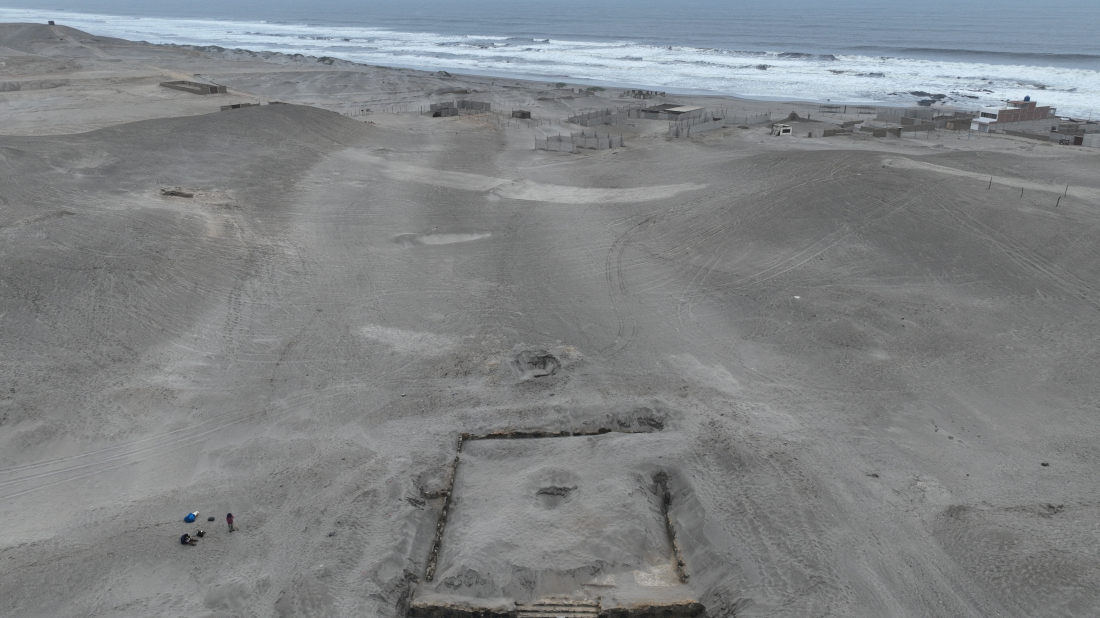At least 19 killed in building collapse in Morocco
At least 19 people were killed and 16 injured as two buildings collapased in Morocco's Fes city according to the state news agency....

Archaeologists in northern Peru have uncovered 14 skeletons buried face down at the ancient Puemape temple, shedding new light on early ritual practices and ancestor worship on the coast.
The site, associated with the Cupisnique culture and later the Salinar civilisation, could now be one of the oldest known ceremonial centres in the region, with evidence of human activity dating back to 2200 B.C.
"This site was already important, but these latest findings change the scale of what we're dealing with," said Henry Tantalean, head of the Chicama Archaeological Program at the National University of San Marcos.
Tantalean believes the skeletons, likely from around 1000 B.C., may point to ritual sacrifices or conflict-related burials conducted by the Salinar people, who reused the sacred site centuries after its original builders abandoned it.
"The way the bodies were placed, face down and sometimes bound, strongly suggests sacrificial practices, which were not uncommon in this region's ancient cultures," he added.
All of the remains were found within the boundaries of the temple, a detail archaeologists say reinforces its sacred status well beyond its initial construction period.
The Puemape discovery is now prompting scholars to reconsider timelines and ritual behaviours along Peru's northern desert corridor.
Scores of demonstrators gathered outside the Norwegian Nobel Institute in Oslo Tuesday (9 December) to protest against the awarding of this year’s Nobel Peace Prize to Venezuelan opposition leader Maria Corina Machado.
Authorities in Japan lifted all tsunami warnings on Tuesday following a strong 7.5-magnitude earthquake that struck off the northeastern coast late on Monday, injuring at least 30 people and forcing around 90,000 residents to evacuate their homes.
Pressure is mounting between Venezuela and the United States as both nations emphasise military preparedness and strategic positioning.
Tehran has protested to Washington because of the travel ban on its football team delegation as well as Iranian fans who would like to travel to the United States for the upcoming World Cup matches in 2026.
Paramount Skydance (PSKY.O) has launched a $108.4 billion hostile takeover bid for Warner Bros Discovery (WBD.O). The escalation follows a high-stakes battle that had appeared to end last week when Netflix secured a $72 billion deal for the studio giant’s assets.
At least 19 people were killed and 16 injured as two buildings collapased in Morocco's Fes city according to the state news agency.
Start your day informed with AnewZ Morning Brief: here are the top news stories for the 10th of December, covering the latest developments you need to know.
The world’s leading minds and voices will be honoured on Wednesday, 10 December, the anniversary of Alfred Nobel’s death, as Nobel Prizes are presented in Stockholm and Oslo.
Artillery fire and ground skirmishes have erupted once again along the jungle frontier between Thailand and Cambodia, shattering a fragile ceasefire and displacing tens of thousands of civilians in the worst outbreak of violence between the neighbours in years.
The United Nations Security Council has issued warnings about the rapidly worsening humanitarian crisis in Ukraine, citing a sharp surge in civilian casualties amidst Russia's intensified aerial attacks, marking the deadliest period of the war in more than a year.
You can download the AnewZ application from Play Store and the App Store.

What is your opinion on this topic?
Leave the first comment